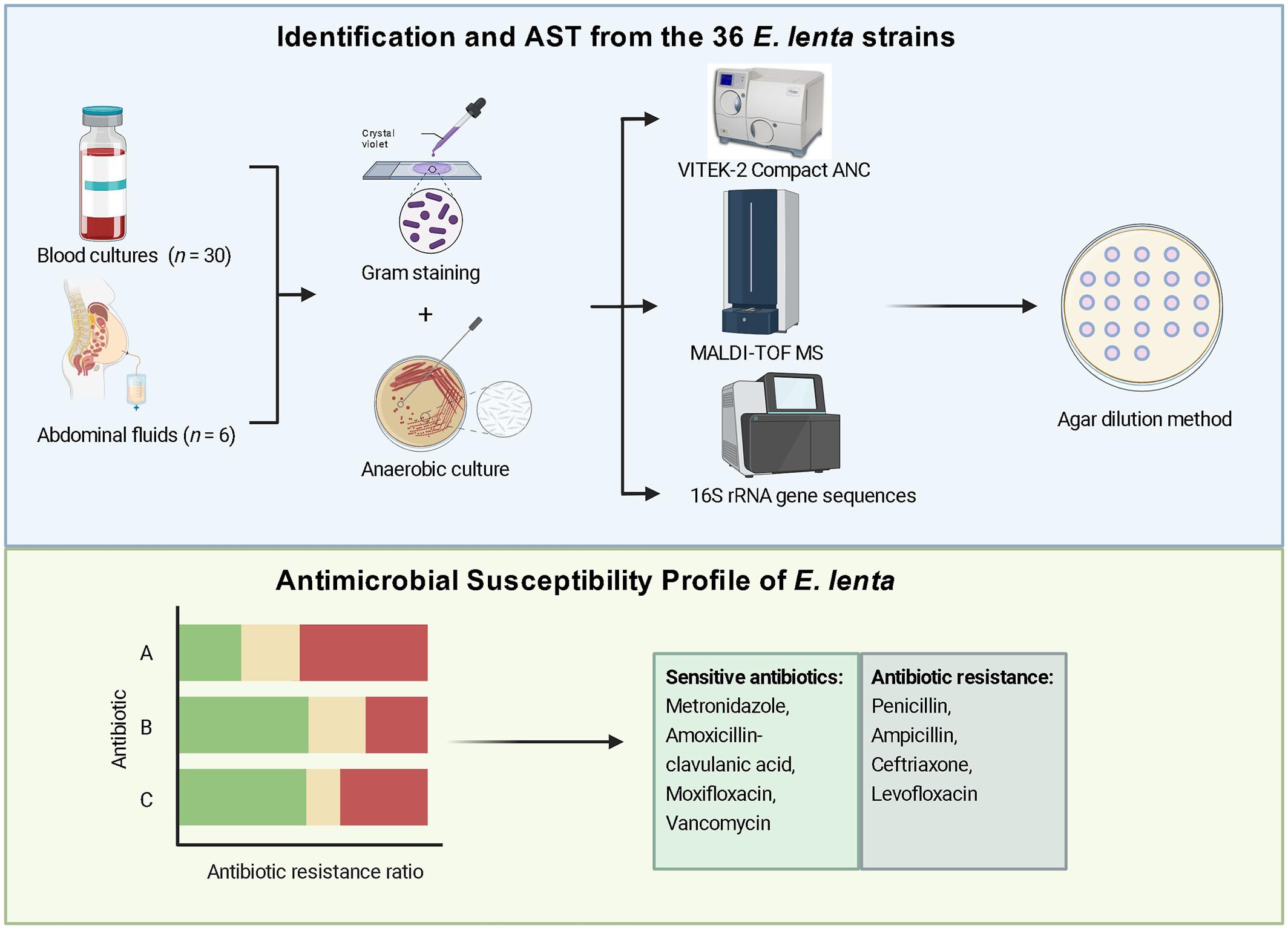Antimicrobial Susceptibility Profile of Eggerthella lenta Isolated From Bloodstream and Abdominal Fluid Infections
Abstract
Background
Eggerthella lenta is an anaerobic gram-positive bacillus associated with severe bloodstream infections and high mortality rates. However, limited antimicrobial susceptibility data in China hinder effective clinical treatment. We aimed to address this by analyzing the antimicrobial susceptibility profiles of E. lenta strains isolated from bloodstream and abdominal fluid infections to provide evidence-based guidance for empirical treatment in clinical practice.
Methods
This study reviewed 36 cases of E. lenta isolated and cultured from bloodstream and abdominal fluids between 2018 and 2024. The isolates were identified using various methods, including the VITEK 2 ANC card, MALDI-TOF mass spectrometry, and a 16S rRNA gene sequencing assay. Antimicrobial drug susceptibility testing of the 36 E. lenta isolates was conducted using the agar dilution method. A minimum inhibitory concentration (MIC) fold analysis was performed with reference to the CLSI and EUCAST guidelines.
Results
The identification of E. lenta was performed using VITEK-2, MALDI-TOF MS, and 16S rRNA sequencing. All methods showed high consistency, with 16S rRNA sequencing confirming the species classification of the isolates. Eggerthella lenta exhibited varying degrees of resistance to penicillin, ampicillin, ceftriaxone, levofloxacin, clindamycin, ceftazidime, imipenem, piperacillin-tazobactam, and amikacin. Conversely, the bacterium was sensitive to amoxicillin-clavulanic acid, moxifloxacin, chloramphenicol, metronidazole, and vancomycin.
Conclusions
These findings indicate that metronidazole, amoxicillin-clavulanic acid, moxifloxacin, and vancomycin are the preferred empirical treatments for E. lenta. Furthermore, there is an urgent need to optimize anti-E. lenta treatment guidelines and the MIC threshold values for piperacillin-tazobactam to ensure a close correlation with clinical data and to accurately guide the effective management of invasive E. lenta infections.


 求助内容:
求助内容: 应助结果提醒方式:
应助结果提醒方式:


